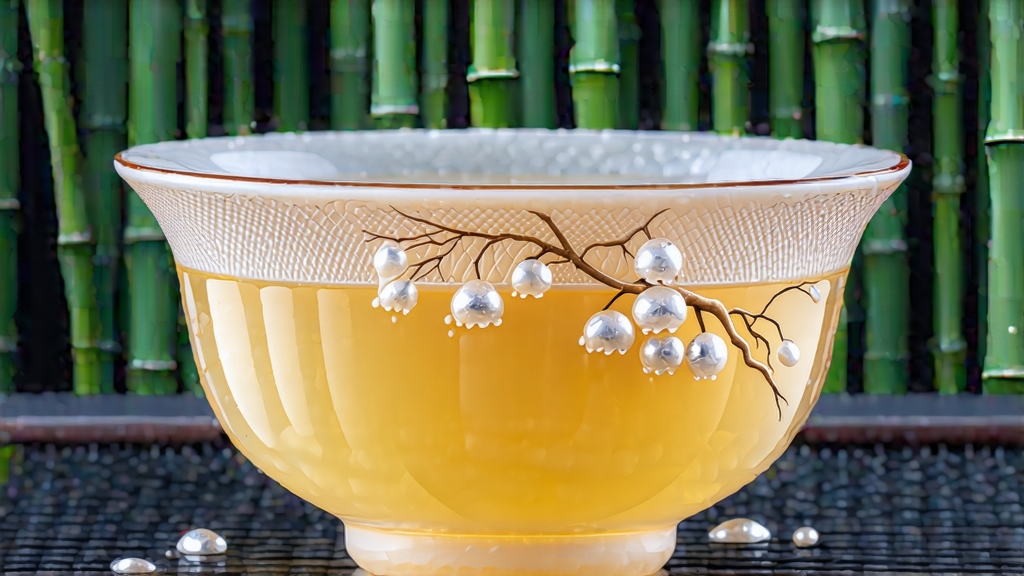
White tea is the most minimally handled of all China’s six great tea families, yet within its apparent simplicity lies a universe of nuance. Among its handful of celebrated styles, none embodies the marriage of delicacy and endurance more poetically than Bai Hao Yin Zhen—translated abroad as “White-Hair Silver Needle.” These two-inch, down-coated buds, plucked only in the brief window between late March and early April, look less like tea and more like slivers of lunar quartz. When they meet hot water they unfold into a slow-motion ballet, releasing a liquor the color of first morning light and a fragrance that moves from fresh lychee to standing timber after rain. To understand Silver Needle is to understand how Chinese artisans turned restraint into an art form centuries before “minimalism” became a global buzzword.
Historical whispers place the birth of white tea in the Song dynasty (960-1279), when the imperial court demanded “tribute cakes” pressed from downy buds. Those cakes, however, were green-tea ancestors; the loose, un-pressed Silver Needle we recognize today did not crystallize until the mid-Qing era in Fujian’s northeast, specifically the coastal counties of Fuding and Zhenghe. Local chronicles from 1796 mention a county magistrate who, charmed by the buds’ resemblance to silver sewing needles, presented them to the Jiaqing Emperor. The court’s approval instantly elevated the tea from rustic curiosity to luxury commodity. Foreign trade followed: by 1890 Fuding port was loading “Pekoe Tips” onto British clippers bound for London, where they were auctioned alongside Darjeeling and Ceylon. The 1915 Panama-Pacific International Exposition awarded Silver Needle a gold medal, sealing its global reputation. Yet the 20th century’s wars and communes nearly erased the craft; only a handful of state-run factories kept the withering beds alive. When China reopened in the 1980s, old tea masters returned from retirement to re-teach the slow withering art, and Silver Needle re-emerged as the flagship of modern Chinese white tea.
Strict Chinese国家标准 (GB/T 22291-2017) limits the name “Silver Needle” to single buds picked from specific cultivars—Fuding Da Bai, Fuding Da Hao, and Zhenghe Da Bai—before Qingming festival, when the bud’s length still exceeds the adjoining leaf. A 500-gram finished batch requires roughly 30,000 hand-snipped buds, each plucked at dawn while dew acts as a natural lubricant against bruising. The cultivars themselves are botanical marvels: their tender shoots carry 5-7% trichome density, nearly double that of Longjing or Biluochun, explaining the tea’s trademark silvery fuzz and high amino-acid sweetness.
Processing sounds deceptively simple—pick, wither, dry—but each step is a negotiation with weather. After picking, buds are spread on bamboo trays 2-3 cm thick and left under a roofed, open-walled pavilion called a “withering corridor.” For 36 to 48 hours they lose moisture while enzymes gently oxidize the outer cell walls, turning grassy aldehydes into floral alcohols. The key is to avoid direct sunlight that would “lock” greenness; instead artisans rely on diffused light and a steady breeze funneled from nearby mountains. When ambient humidity drops below 55%, the buds are moved to a low-temperature charcoal oven (40-45 °C) for a final 20-minute bake, arresting oxidation at roughly 5-8%. The result is a tea that sits physiologically between green and oolong: polyphenol oxidase has nibbled at the catechins just enough to round the edges, yet the leaf remains classifiable as “non-enzymatically fully dried.” Modern producers sometimes substitute electric dryers, but connoisseurs swear the charcoal version leaves a whisper of chestnut that electric heat cannot mimic.
Terroir splits Silver Needle into two stylistic camps. Fuding, on the coast, enjoys marine air and sandy, granite-based soil; its needles steep into a pale champagne liquor with notes of honeydew and coastal orchid. Zhenghe, inland and 300 m higher, possesses red clay and cooler nights; the same cultivar yields a deeper apricot infusion, fuller body, and a longan-sweet finish. Age amplifies